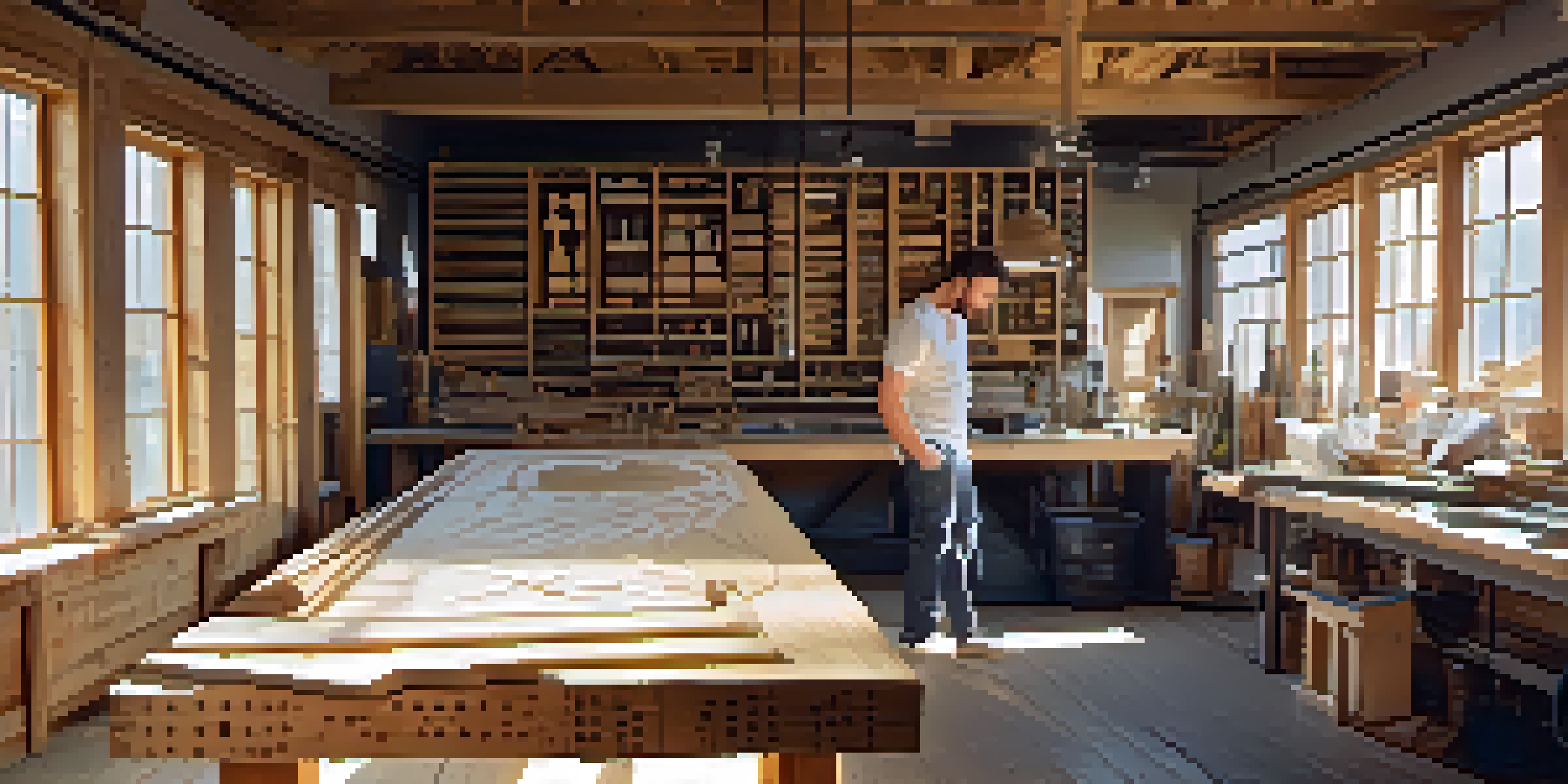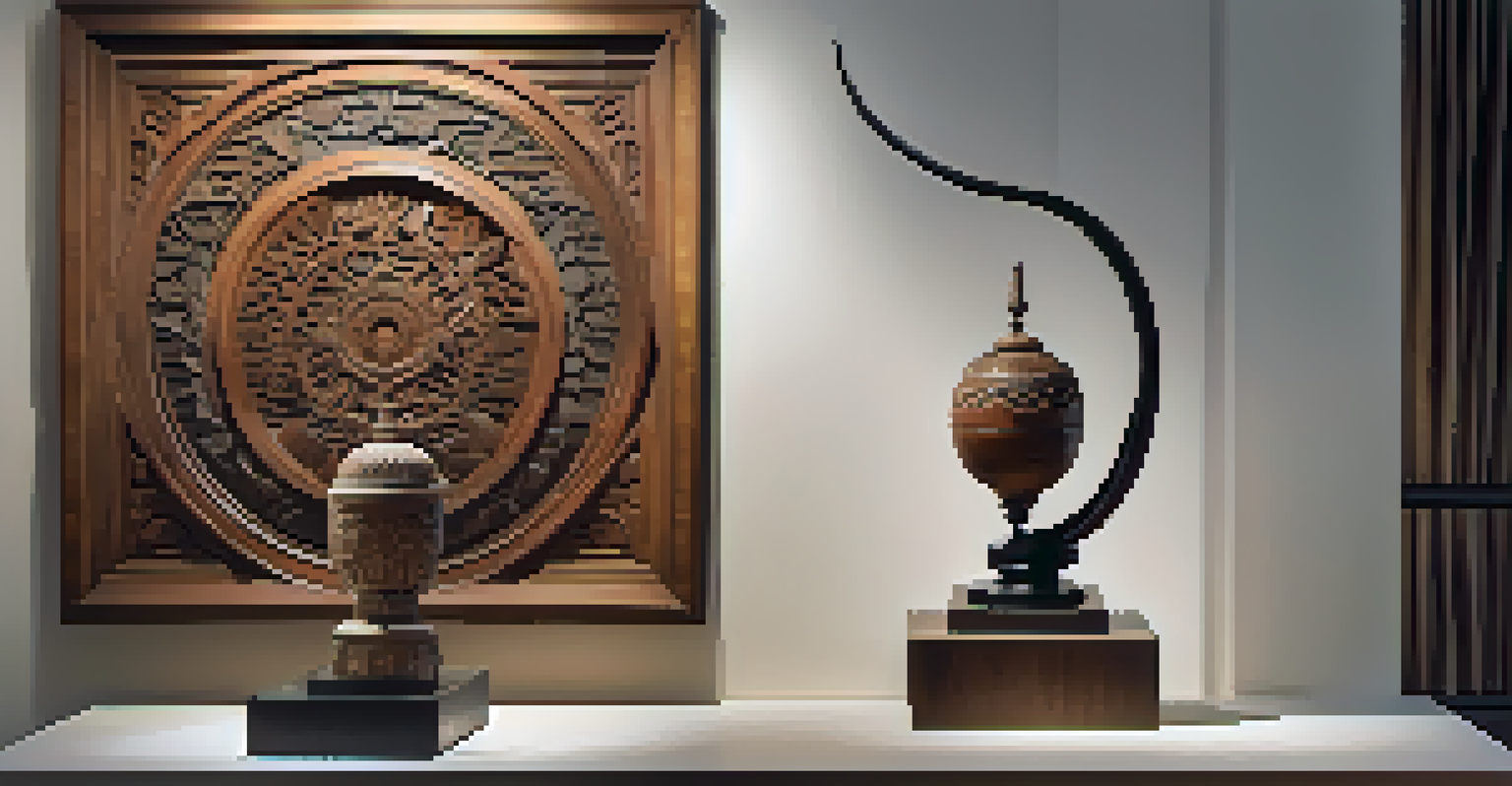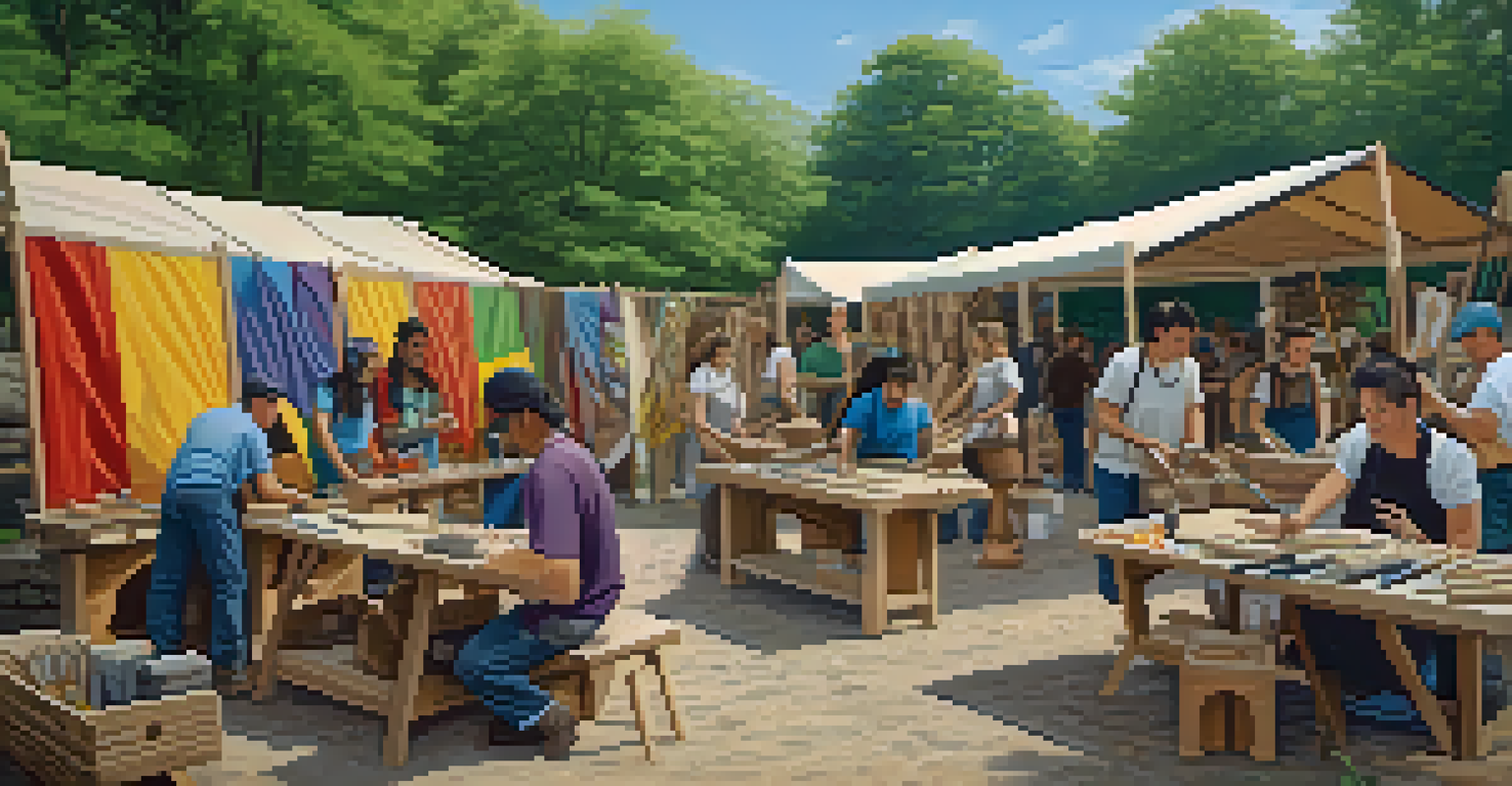Innovative Carving Methods: Breaking Traditional Boundaries

The Evolution of Carving: From Tradition to Innovation
Carving has a rich history that dates back thousands of years, evolving from basic tools to intricate techniques. Traditional methods often relied on hand tools and craftsmanship passed down through generations. However, with advancements in technology, modern artists are breaking free from these conventions, embracing new tools and materials.
Art is not what you see, but what you make others see.
Today, artists are integrating digital tools such as CNC machines and laser cutters into their workflow. These technologies allow for precision and complexity that were previously unimaginable. By combining traditional skills with modern innovations, they can create pieces that are both timeless and forward-thinking.
This fusion of old and new not only expands the possibilities of what can be created but also invites a broader audience to appreciate the art of carving. As artists experiment with innovative techniques, they redefine the boundaries of the craft and inspire the next generation of creators.
Digital Carving: Merging Technology with Artistry
Digital carving represents a significant shift in the way artists approach their craft. Utilizing software and computer-aided design (CAD), artists can visualize their creations in a virtual space before bringing them to life. This method allows for greater experimentation without the constraints of physical materials.

One popular tool in digital carving is the CNC (Computer Numerical Control) machine. It translates digital designs into physical forms with incredible accuracy. Artists can carve intricate patterns or replicate designs with ease, making it a game-changer for large-scale projects.
Carving Blends Tradition and Tech
Modern artists are merging traditional carving techniques with digital tools, expanding creative possibilities.
Moreover, digital carving opens the door for collaboration across various fields. Designers, architects, and sculptors can work together seamlessly, blending their expertise and creating innovative pieces that push the boundaries of traditional carving.
Sustainable Materials: Carving with a Conscience
As environmental concerns grow, many artists are turning to sustainable materials for their carving projects. This shift not only benefits the planet but also adds a unique narrative to the artwork. For instance, artists are exploring options like reclaimed wood, bamboo, and biodegradable composites.
The best way to predict the future is to create it.
Using sustainable materials often challenges artists to rethink their techniques and approaches. They may need to adjust their tools or methods to suit the properties of these materials, leading to innovative results that reflect their commitment to the environment. This adaptability is a testament to the creativity within the carving community.
By prioritizing sustainability, artists not only create beautiful pieces but also raise awareness about environmental issues. Their work can inspire conversations about conservation and the importance of choosing eco-friendly materials in all aspects of art.
Mixed Media: Expanding the Carving Experience
Mixed media is revolutionizing the world of carving by encouraging artists to combine various materials and techniques. This approach allows for a more dynamic expression, where carving is just one part of a larger artistic vision. Artists may incorporate elements such as painting, textiles, or found objects to enhance their carved pieces.
For example, a carved wooden sculpture might be combined with metal or glass elements, creating a striking contrast that draws the eye. This versatility not only enriches the visual appeal but also challenges the traditional notions of what carving can be.
Sustainability Shapes Carving Art
The use of sustainable materials is influencing carving practices, encouraging artists to innovate while promoting environmental awareness.
As artists experiment with mixed media, they push the boundaries of creativity, inviting viewers to experience art in new and engaging ways. This trend reflects a broader shift in the art world towards collaboration and innovation, making carving a more inclusive and evolving practice.
Cultural Influences: Carving Beyond Borders
Carving techniques are deeply rooted in cultural traditions, and many artists are now exploring ways to blend these influences into their work. By studying various cultural practices, they gain new perspectives and techniques that enrich their carving style. This cross-cultural exchange fosters creativity while honoring the history of the craft.
For instance, an artist may incorporate intricate patterns from African tribal art into a modern piece, creating a dialogue between the past and present. This not only showcases their skill but also pays homage to the rich tapestry of global art traditions.
Embracing cultural influences allows artists to create work that resonates with a diverse audience. As they share their interpretations, they cultivate a greater appreciation for the art of carving across different communities and backgrounds.
The Role of Workshops: Nurturing Innovative Carving Skills
Workshops play a crucial role in fostering innovation within the carving community. They provide a space for artists of all levels to experiment with new techniques and learn from one another. Whether it's a weekend retreat or a week-long intensive, workshops encourage collaboration and creativity.
In these settings, participants can explore cutting-edge tools and methods they may not have access to otherwise. For example, a workshop focused on digital carving might introduce artists to software and CNC machines, breaking down barriers to entry for those interested in the medium.
Cultural Exchange Enriches Carving
Artists are integrating diverse cultural influences into their work, creating a rich dialogue between traditional and contemporary styles.
Moreover, the sense of community in workshops creates a supportive environment where artists can share their experiences and challenges. This exchange of ideas often sparks inspiration, leading to fresh concepts that propel the art of carving into new territories.
Future Trends in Carving: What Lies Ahead?
As we look to the future, several trends are emerging within the carving community that promise to reshape the craft. The integration of augmented reality (AR) and virtual reality (VR) technologies is one such trend, offering artists new ways to visualize and experience their work. Imagine being able to step into a digital gallery showcasing your carved pieces before they’re physically created!
Additionally, the rise of online platforms for sharing and selling artwork allows artists to reach global audiences with their innovative carvings. With social media and e-commerce, the market for unique, handcrafted pieces is expanding, providing opportunities for artists to thrive.

As the carving world continues to evolve, one thing remains clear: innovation is at the heart of the craft. By embracing new technologies, sustainable materials, and cultural influences, artists are poised to break traditional boundaries and redefine what carving means in the contemporary art landscape.